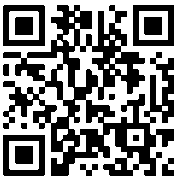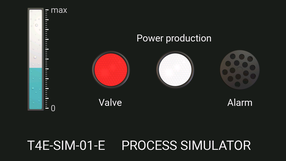PROCESS SIMULATORS with Arduino, breadboard, electronic components, Bluetooth interface and App
TEK4EDU has developed products that allow a technological and experimental path in the electronics with Arduino technology.
The final beneficiaries of the products are the Students of the Secondary School and schools who want to deepen the topics covered during lessons TECHNOLOGY, ELECTRONICS and PROGRAMMING (Arduino and Android App).
Through active experimentation Students will:
1. focus and store more effectively the topics theoretically,
2. Use simple instrumentation for performing measurements and learn the meaning of the variables, the
Units and the scientific terms in common use,
3. propose innovative solutions and creative changes to the system being studied.
Our current proposal includes the following Process Simulators with Arduino UNO board:
- Hydroelectric power station simulator hydroSIM mod.T4E-SIM-01
- Greenhouse simulator greenhouseSIM mod.T4E-SIM-02
- Photovoltaic system simulator solarSIM mod.T4E-SIM-03
- Wireless transmission system simulator wirelessSIM mod.T4E-SIM-04
Also available the EASY version, which add Bluetooth interface and Android APP.
Each simulator comes with an Arduino UNO board ready for use because it is already factory-programmed.
Simply just power the simulator to use it.
They are available in two versions:
- Standard: with Breadboard and electronic components to be mounted.
It is geared to Coding and Practice.
The teacher (depending on the school's level of education) can focus on:
- the topics exposed (eg the operation of the hydroelectric power station)
- reading simple electrical and assembly diagrams
- practice: showing, identifying and assembling electronic components on the breadboard, performing wiring between Arduino board and breadboard
- demonstration of how the Arduino code was developed and it run the simulator, possibly making changes to evaluate effects and show them to the Students
This version is recommended for Secondary/Vocational School.
- Easy: with a printed circuit board that contains the already assembled electronic components ready for use.
It is more geared towards coding and installing, using, and understanding Android apps. It has a Bluetooth interface for connecting to Smartphone or Tablet.
The teacher (depending on the school's level of education) can focus on:
- the topics exposed (eg the operation of the hydroelectric power station)
- reading simple electrical and assembly diagrams
- executing wiring between Arduino board and circuit board
- installing and using the included app using our QRcode
- the design of a simple App with free downloadable software from Google Play (Play Store)
- demonstration of how the Arduino code was developed and it run the simulator and manages the Bluetooth interface, possibly making changes to evaluate the effects of the Student
- demonstration of how the App was developed that manages the data received from the Simulator via Bluetooth, possibly making changes to evaluate the effects of the Student.
The App was built with App Inventor 2 for Android (AI2), which is a free development environment for open-source Android applications run by the MIT (Massachusetts Institute of Technology).
AI2 uses object programming with a very simple and intuitive interface, like drag-and-drop, very similar to other programming environments such as Scratch.
This version is recommended for Primary School, Secondary/Vocational School and High Level School.
Especially for primary schools, it is a valid demonstrator:
- of the concepts exposed: eg. The operation of the hydroelectric power station
- Technology used: Electronic boards, Electronic Components, App ...
- installation and use of the included App.
You do not need to know or know how to use Arduino or how the Apps have been developed: they will only be resources used.
For higher level schools, conversely, you will be able to enter details of developed topics by modulating the depth level, since the source codes for Arduino and App are provided.
Each simulator consist of:
- A transparent ergonomic base that contains the synoptic design system
- An Arduino UNO board and
- A breadboard with components to be assembled (Standard version) or a circuit with the components already assembled and ready to use (Easy version).
It is powered by the PC through the Arduino UNO board, but can also operate without PC (option suggested myLAB mod.T4E-LAB-01 or mod.T4E-ACC-03).














solarSIM mod.T4E-SIM-03
It is the Standard version simulator that shows the operation of a photovoltaic system that produces electricity from the sun.
solarSIM mod.T4E-SIM-03-E
It is the Easy version simulator that shows the operation of a photovoltaic system that produces electricity from the sun.
Fully compliance Bluetooth and Google Play






wirelessSIM mod.T4E-SIM-04
It is the Standard version simulator that shows how you can transfer with a wireless means of transmitting a digital information.
wirelessSIM mod.T4E-SIM-04-E
It is the Easy version simulator that shows how you can transfer with a wireless means of transmitting a digital information.
Fully compliance Bluetooth and Google Play




wirelessSIM has functional characteristics and similar teaching to other simulators, but is composed of two parts:
- A circuit which contains the 433MHz transmitter and
- The ergonomic base, which contains the Arduino UNO board and 433MHz receiver.
In this way, the transmitter can be placed (being powered by batteries, see picture) to many meters away from the receiver.
We will be able to remotely control (on/off or bistable type) from the transmitter an appliance closed to the receiver (eg. power-on/off LEDs/buzzer, ...).
wirelessSIM uses true electronic components of Radio Frequency and uses free ISM band (Industrial, Scientific, Medical) at 433MHz.
The simulator receiver can also receive signals from other radio controls in the same area that use the same band, allowing to be a topic of discussion about electromagnetic pollution.
You can also use an oscilloscope (if available in the institute) to observe the transmitted and received signals (see photo) and to show students how to use it.

wirelessSIM
Standard version
The picture shows
the Transmitter unit and the main unit that includes receiver and Arduino board.
The oscilloscope shows the command obtained by pressing repeatedly (5 times) the transmitter button (yellow trace) and the received data signal (blue trace)

wirelessSIM
Standard version
The picture shows only
the transmitter unit,
The oscilloscope shows the command obtained by repeatedly pressing the transmitter button (yellow trace) and the transmitted signal (blue trace).



Example of Sketch

Example of flow-chart
Schematic and assembly diagrams (included)
Examples of the use of Simulators (the pictures show hydroSIM mod.T4E-SIM-01 and optional accessories):
1. Simulator powered by USB port of PC for exercises of coding

2. Simulator powered by Power Supply Trainer myLAB and without PC, for practical experiments

3. Simulator powered by Power Bank (or Power Adapter mod.T4E-ACC-03) and without PC, for practical experiments

Only for EASY version (the images are related to the hydroSIM mod.T4E-SIM-01-E and optional accessories)
Example of proprietary App designed with by MIT AppInventor2 and supplied with the simulator (source file .aia and App file .apk):




Install our App (even without Simulator!):
1. Get a QR Code Reader from Google Play
2. capture our QR Code
3. Download our App and install it
Send your comments to info@tek4edu.com: they will be appreciated!


Example of App designed with free Application downloaded from Google Play :


Video tutorial: Description, Operation and App (sorry for italian language!)



HDMI RECEIVER mod.T4E-ACC-08 (option)

The HDMI receiver mod.T4E-ACC-08 is a complete kit that can be used by the teacher during an exercise, to view all the operations performed on the screen of an Android device (smartphone or tablet) with a TV monitor, an IWB or video projector.
The teacher uses the App on the Android device and explains its operation to the students, while the same screen is transmitted and faithfully replicated on the larger monitor.
It is ideal for use with our Process simulators - Easy series mod.T4E-SIM-xx-E to show the App used to control the operation of the simulator or during the development/changes of the App with MIT App Inventor.




